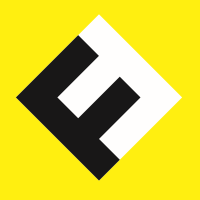
We've had the great Flickr Set by Slávka Pauliková – designer of FF Dora, one of my favourite FontFont releases of late – from the graduation show in The Hague to tide us over the past two weeks, and people in Berlin can visit the Mastering Type 13 exhibition at the Mota Italic Gallery where they are shown alongside the typefaces of the 2013 masters students of the University of Reading. And now the Type & Media class of 2013 present their work in terrific detail on a website that again raises the bar for online presentation of student work.



Type]Media 2013 graduation show. Photos by Slávka Pauliková
The typefaces by this year's graduates from KABK's intensive one-year masters course in type design show once again an interesting breath. The designs range from versatile text type to surprising display faces, from subdued practicality to controlled exuberance, from sharp and spiky to round and chubby, from experimental to conventional, from Latin-only to multi-script character sets. Understandably the more showy designs draw the attention, but it is well worth your time to examine the quieter typefaces as well.





Half of the graduation projects are text faces, some of them with optical size variants. The high-contrast serif typeface Botanica (top) by Tania Alvarez Zaldivar (Mexico) has a pleasantly dark colour, and combines angular serifs with lovely curvaceous stroke endings on selected characters that add a dash of refined elegance to the text image. Editura (middle) by Diana Ovezea (Romania) is a confident type family for serious publications, magazines, as well as non-fiction books. The three variants (Caption, text, and Display) of the sans serif Westeinde influenced by Bauhaus and Constructivism by Adam Katyi (Hungary) stem from research about the main differences between caption and display optical sizes

Some of the display faces include text variants. Binky by Teo Tuominen finds its inspiration in antique wood type. Adopting the forceful shapes of wide slab serifs, it integrates influences from Tuscan and shadow type in the display styles, and then reins the letter forms back in to obtain a sturdy text slab.
The big bonus this year over the already superb 2011 and 2012 websites however is the addition of information about the creation process. Instead of merely presenting the end result, the students go the extra mile and also provide valuable insight into the creation process. This again strengthens my conviction after all the conferences I attended and spoke at the last two, three years that if you show your work but don't talk about process or context, your presentation loses most of its interest and becomes empty showboating.



Two projects concerned with orientation systems. The slab serif Mala (top) by Barbara Bigosińska (Poland) reinvents alphabets for cartography, offering eight styles in three widths and swashes that are a contemporary take on lettering found on early maps (see also Incognito for a vintage interpretation). Troy Leinster (Australia) infuses the personality of the city and its inhabitants in a relaxed, self-assured sans serif designed specifically for pedestrian wayfinding in Brisbane.
As usual the Type]Media 2013 work is a impeccably-designed, no-frills affair, created by Alexandre Saumier Demers, a Montreal-based "type designer with a programming influence, a background in graphic design and a passion for cycling". This future Type & Media student developed the website under the art direction of the 2013 class graduates. The simple navigation and structure makes browsing through the twelve projects an effortless, enjoyable experience. Honestly, this is the main reason why this entry is posted today, not yesterday.





Multi-script type systems amongst this year's graduation projects include Amanita, Chimera and Nurraq. Amanita (top) by Krista Radoeva (Bulgaria) comes in three stencil versions and a matching text weight, and incorporates Bulgarian Cyrillics in the Black and Text styles. The dynamic and rather spectacular Chimera (middle) by Maria Doreuli (Russia) reverses the contrast at a 45° angle created by the broad-nibbed pen; the Display Black supports Cyrillic. Nurraq by Étienne Aubert Bonn (Canada) is a friendly, low-contrast text slab serif with Canadian aboriginal syllabics character set for the Inuktitut language.
Just like last year for Nitti, the website also serves as a great showcase for Trio Grotesk. This wide, rounded sans serif is Florian Schick's personal interpretation of Kaart Antieke – an early 20th century sans serif used by Piet Zwart in his famous, yet never officially published essay about modern typography called Van oude tot nieuwe typografie. To be honest I never expected this typeface to work in body text, with its generous width and moderate x-height, but the Type]Media 2013 website proves me wrong. The copy is pleasant to read and gives off a friendly atmosphere. To conclude, again a stellar effort, both in the quality of the work as in the presentation.





From razor-sharp to rounded – Lukas Schneider's stellar Damien (top) needs to be applied in a redesign of The Times (or any other newspaper for that matter) right now, while the calligraphic broad-nib pen origins beautifully shine through in Curtis (middle) by Bernd Volmer (both Germany). The playful and inviting Ricochet by Sun Helen Isdahl Kalvenes (Norway) on the other hand has its origins in the speedball pen, which accounts for its characteristic round endings and low contrast.
Header image:Ken Barber lecture and lettering workshop at Type & Media, February 2013. Photo by Lukas Schneider








